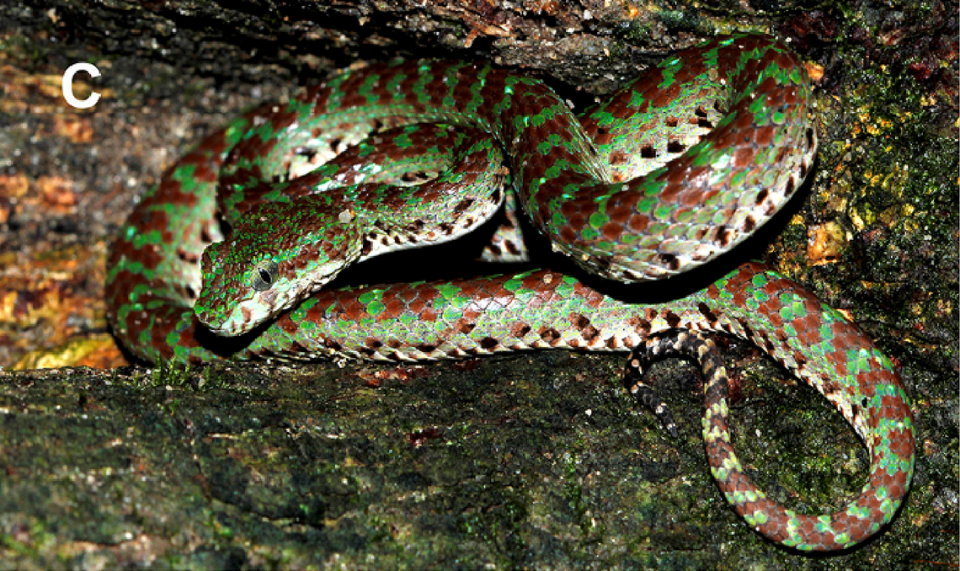‘Unusual’ forest creature — with ‘eyelashes’ — discovered as new species in Thailand
Nestled in a forest in Thailand, an “emerald-green” creature moved along several large boulders. The “unusual” animal — and its “eyelashes” — caught the attention of scientists. It turned out to be a new species of reptile.
Researchers first spotted the colorful reptile along limestone rocks in Satun province in 2016, according to a study published Sept. 19 in the journal Vertebrate Zoology. Intrigued by its “unusual” appearance, they set out to find more similar-looking reptiles.
Near large limestone boulders “covered with dense vegetation,” researchers found four more of these snakes, the study said. They examined the snakes and realized they’d discovered a new species: Trimeresurus ciliaris, or the limestone eyelash pitviper.
The limestone eyelash pitviper is considered “small,” reaching about 17 inches in length, the study said. The “jewel”-like viper has an “emerald-green” body covered in “dark red cross-bands. Its head is “triangular,” and its eyes are “olive-green.”
Photos show the limestone eyelash pitviper in its natural habitat.

Co-author Nikolay Poyarkov told McClatchy News that the new species has a “beautiful coloration” which also “helps the viper to hide on the surfaces of limestone rocks covered with mosses, lichens and so on.”
The new species is venomous, Poyarkov said. However, the details of its venom are “unknown,” the study said. In captivity, the snake ate frogs and small geckos, but its natural diet is unknown.

The new species was named “ciliaris” after the Latin word for “eyelash” because of the scales above its eyes that “resemble eyelashes or eyebrows,” the study said.
“Normally (pitvipers) have one large scale above the eye which looks a bit like an eyebrow and gives these snakes a serious look,” Poyarkov said. However, the new species has “numerous small, slightly protruding scales above the eye which looked more like eyelashes.”
As a result, “the snake looked pretty cute,” he said.
Photos show several limestone eyelash pitvipers in profile view. The snakes have several small, red and green scales along the top of their eyes.

Limestone eyelash pitvipers have only been found in “a narrow limestone area” of Trang and Satun provinces in Thailand, the study said. These neighboring provinces are about 500 miles southwest of Bangkok and along the Thailand-Malaysia border.
“A similarly-looking pitviper” has been documented in the neighboring Malaysian state of Perlis, the study said. Researchers have not confirmed these sightings as the limestone eyelash pitviper but said it is “highly likely” that the new species lives in Perlis.
The new species was identified based on its coloring, scale pattern and genitalia, the study said. DNA analysis found the new species had between about 7% and 17% genetic divergence from other pitvipers. Researchers said this “is higher than the genetic distances between many other recognized species of the group.”
Scientists will need to study the new species further to understand its “distribution, diet, reproductive biology, population size, population trends and conservation status,” the study said.
The research team included Sabira Idiiatullina, Parinya Pawangkhanant, Tanapong Tawan, Thanawut Worranuch, Bunyarit Dechochai, Chatmongkon Suwannapoom, Tan Van Nguyen, Lawan Chanhome and Nikolay Poyarkov.
See-through creature — with orange ovaries — found in ‘coral rubble’ is a new species
‘Long-tailed’ woodland creature seen licking tree sap in Australia. It’s a new species
Copper-eyed mountain creature — with pointed ‘spurs’ — discovered as new species


